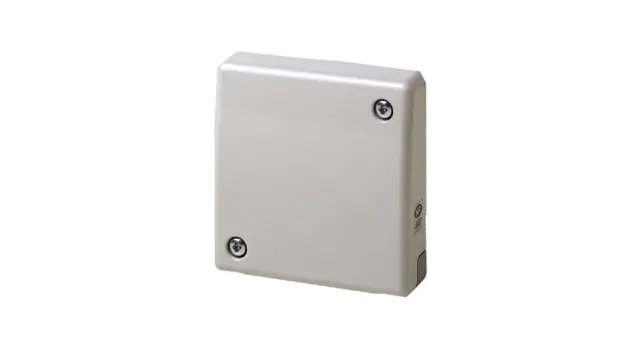Overview :
Seismic Detectors also known as Ground Motion Sensors , are devices designed to detect and measure ground vibrations or seismic activity. These sensors play a critical role in monitoring natural and man-made ground movements, such as earthquakes, tremors, or even vibrations caused by machinery or construction activities. By detecting subtle vibrations, these sensors can provide early warnings of seismic events, help prevent structural damage, and enable proactive safety measures in various industries, including construction, mining, security, and scientific research.
Key Features :
1. High Sensitivity : Detects even the smallest vibrations or seismic shifts, enabling early detection of potential events like earthquakes or structural issues.
2. Wide Detection Range : Monitors a broad range of seismic activities, from low-frequency ground shifts to high-impact tremors, providing comprehensive coverage.
3. Real-Time Monitoring : Provides continuous, real-time data on ground movement, ensuring immediate alerts when significant changes are detected.
4. Durability : Built to withstand harsh environmental conditions, including extreme temperatures, humidity, and vibrations, ensuring long-lasting performance.
5. Low Power Consumption : Designed for energy efficiency, ideal for long-term deployment in remote or off-grid locations.
6. Data Logging Capabilities : Some models come with built-in memory to log seismic data, allowing for historical analysis and trend monitoring.
7. Alarm and Notification Systems : Integrated alarm systems or notifications alert users to seismic events, enabling rapid response and safety measures.
8. Easy Integration : Can be easily integrated into existing security systems, infrastructure monitoring setups, or scientific research equipment.
Ideal For:
1. Earthquake Detection : Provides real-time alerts for earthquake tremors, helping mitigate damage and enhance safety.
2. Structural Health Monitoring : Used to monitor the integrity of buildings, bridges, and other infrastructure to detect vibrations that could signal stress or potential failure.
3. Construction Sites : Detects ground movements from construction activities, helping to monitor and prevent damage to nearby structures.
4. Mining and Drilling Operations : Monitors seismic activity in and around mining or drilling sites, ensuring that operations are safe and do not cause hazardous ground shifts.
5. Security and Intrusion Detection : Detects unauthorized tunneling or ground penetration, providing an additional layer of security for sensitive areas or installations.
6. Seismology and Geological Research : Used in scientific research to study seismic waves, fault lines, and other geological phenomena.
7. Hazard Detection in Industrial Plants : Identifies hazardous vibrations in industrial environments that could indicate equipment malfunction or failure.
Keywords:
– Ground Vibration Detection
– Seismic Activity Monitoring
– Earthquake Detection
– Ground Motion Sensors
– Seismic Wave Detection
– Vibration Monitoring Systems
– Structural Integrity Sensors
– Seismic Safety Systems
– Vibration Alarm Systems
– Geophysical Monitoring
Why We Use Seismic Detectors – Ground Motion Sensors:
1. Early Detection of Seismic Events : Seismic detectors provide early warnings of potential earthquakes, allowing time for safety protocols to be activated.
2. Structural Protection : By monitoring ground vibrations, these sensors help protect infrastructure (e.g., buildings, bridges) from damage caused by seismic events.
3. Prevention of Damage : Early detection of unusual seismic activity can prevent expensive damage to machinery, infrastructure, or sensitive equipment.
4. Security Enhancement : In sensitive areas, seismic detectors can detect unauthorized tunneling or ground penetration, enhancing overall security.
5. Scientific Research : Ground motion sensors are essential for studying seismic activity, helping geologists and seismologists better understand Earth’s movements and improve early warning systems.
6. Monitoring Operational Safety : In industries like mining or construction, seismic detectors can ensure that ground shifts do not threaten worker safety or damage surrounding structures.
Benefits :
1. Enhanced Safety : By detecting seismic events early, these sensors provide crucial time to initiate safety measures, helping to save lives and prevent injuries.
2. Damage Prevention : The early detection of ground vibrations allows for timely interventions to prevent infrastructure or equipment damage.
3. Real-Time Alerts : Seismic detectors provide real-time data, allowing immediate responses to seismic events, minimizing the impact of damage.
4. Cost Savings : Preventing structural damage or mechanical failure through early detection helps save on repair and replacement costs.
5. Operational Efficiency : In industrial applications, continuous monitoring of seismic activity ensures smoother operations, identifying potential risks before they lead to downtime.
6.Data Logging for Analysis : The ability to log seismic data over time helps engineers and researchers track trends, analyze patterns, and make more informed decisions for maintenance or safety.
7. Versatility Across Industries : These sensors are useful in various sectors, from earthquake detection to construction site monitoring, making them highly adaptable to different needs.
8. Long-Term Reliability : With durable designs and low power consumption, seismic detectors offer long-term, reliable monitoring with minimal maintenance.





Reviews
There are no reviews yet.